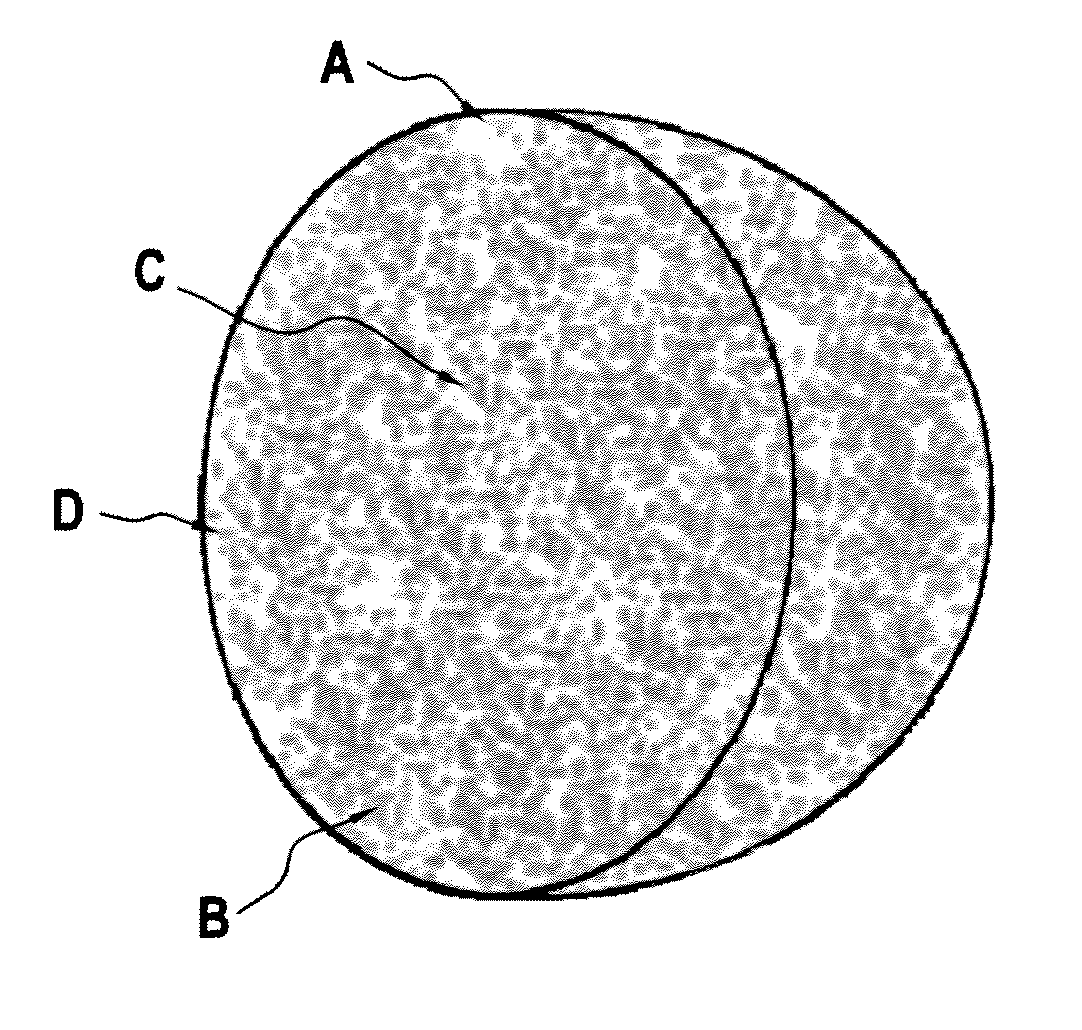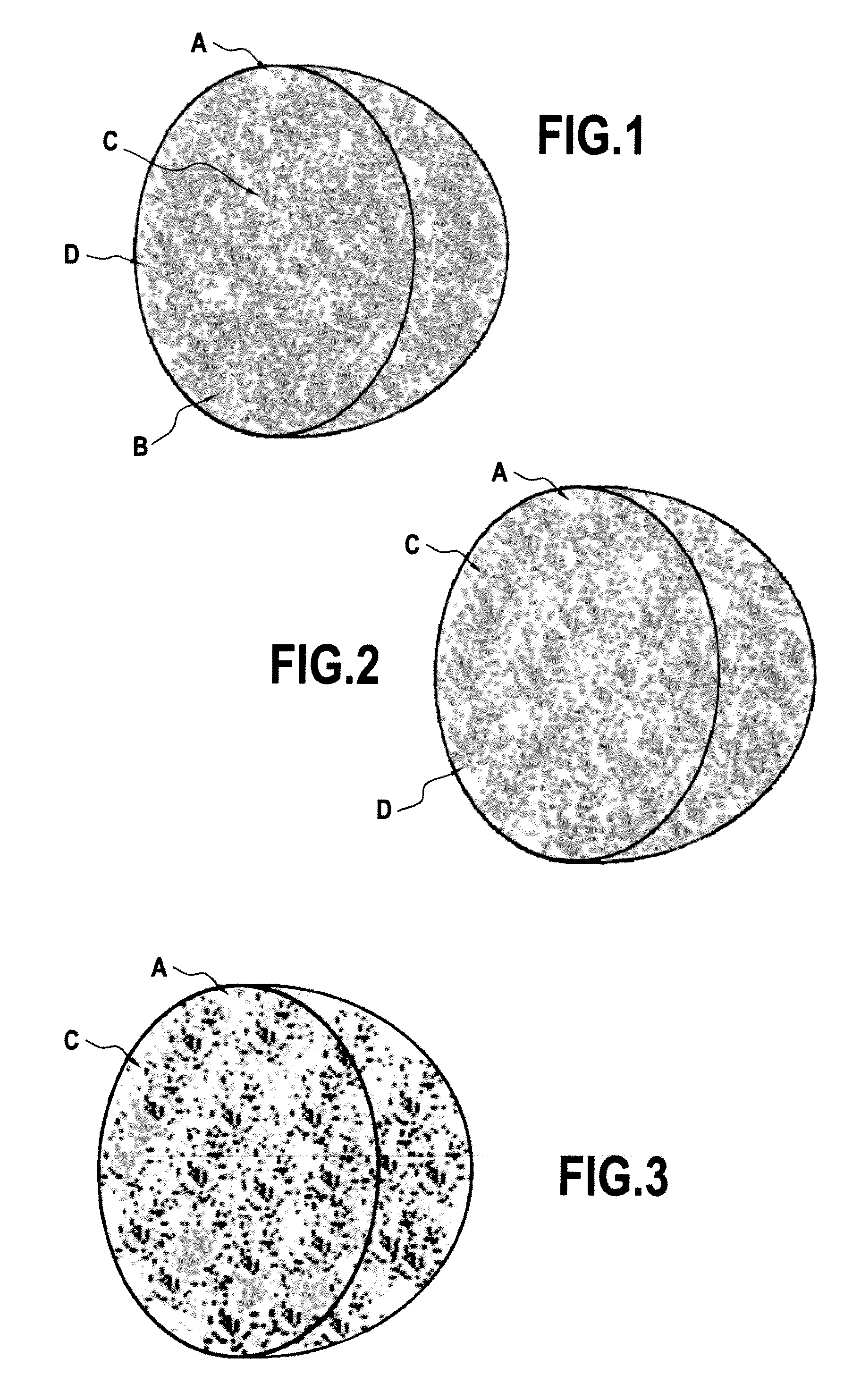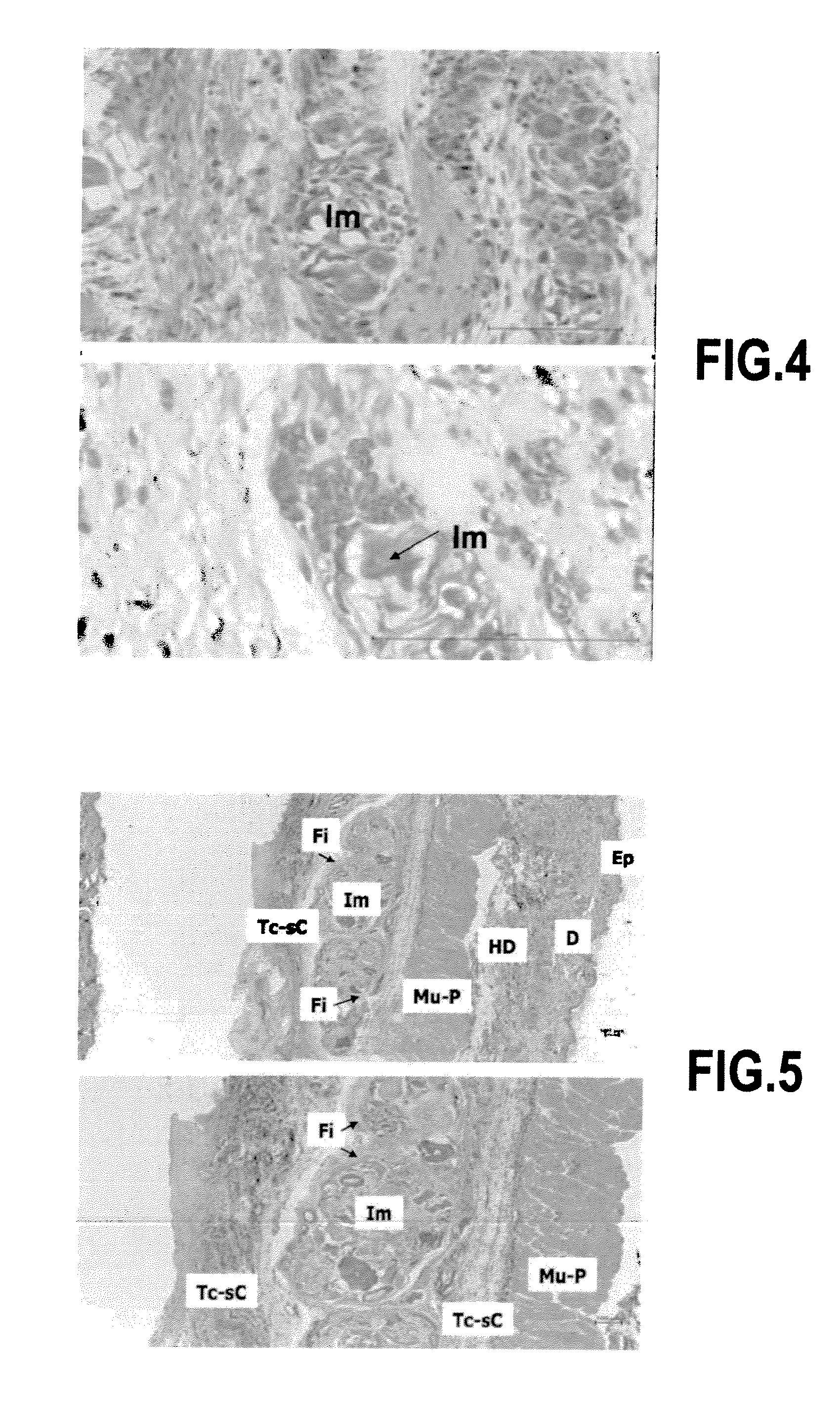Hydrogel of microspheres
a technology of hydrogel and microsphere, which is applied in the field of hydrogel of microspheres, can solve the problems of inability to resorb products, swollen and hard tissues, and inability to cheaply and cheaply manufacture products, and achieves the effects of stimulating the mechanism of collagenesis, improving the performance of treatment, and reducing the risk of inflammatory diseases
- Summary
- Abstract
- Description
- Claims
- Application Information
AI Technical Summary
Benefits of technology
Problems solved by technology
Method used
Image
Examples
example 1
Preparation of a Biodegradable Polymer Gel
[0107]A solution of a carrier fluid or hydrogel for suspending the microspheres (for example a solution or a gel of hyaluronic acid with a molecular weight of 2 million dalton with a concentration between 0.5 and 3 vol. %) is prepared as follows:
[0108]Put 6 g of sodium chloride in 600 ml of sterile water in a 1 L glass reactor.
[0109]After dissolving the sodium chloride with a sonicator, add 4 g of hyaluronic acid (MW 2 million dalton), carefully unraveling the fibers of hyaluronic acid by hand as far as possible.
[0110]After stirring the heterogeneous mixture with a spatula for 2 minutes, leave the reactor at 4° C. for 20 h without stirring, covered with aluminum foil to protect the reaction mixture.
example 2
Preparation of Microspheres of the Invention
Production of the Microspheres of the Invention by Spraying a Solution and Final Chemical Reaction:
[0111]A compound of gel of sodium hyaluronate is prepared in order to obtain resistance to heat, by combining a starch gel and a dextran gel with a gel of CMC, to form matrices, said matrices having a size of 20 to 40 microns.
[0112]The microspheres are prepared independently of the hydrogel.
Method:
[0113]preparation of the spraying solution:
[0114]dissolve 64 g of carboxymethylcellulose in 800 ml of previously heated (50+ / −5° C.) purified water, with stirring;
[0115]add 200 ml of isopropanol, then 8 g of sodium hyaluronate, 4 g of maltodextrin, and 4 g of native starch gel;
[0116]continue stirring the suspension with a magnetic bar
[0117]adjustment of the sprayer to obtain microspheres of 30 microns (SD 10 microns):
[0118]use a sprayer of the BUCHI B-290 type;
[0119]set the compressed air at 6 bar;
[0120]air / solvent aspirating pump at 100%;
[0121]peri...
example 3
Preparation of Microspheres of the Invention
Production of the Microspheres by Direct Spraying:
[0138]A compound of gel of alginate and calcium hyaluronate is prepared in order to obtain resistance to heat, by combining with a gel of CMC to form matrices, said matrices having a size of 20 to 40 microns.
[0139]The microspheres are prepared independently of the biodegradable polymer gel.
Method:
[0140]preparation of the spraying solution:
[0141]dissolve 40 g of carboxymethylcellulose and 24 g of HPC in 600 ml of previously heated (60+ / −5° C.) purified water, with stirring;
[0142]add 400 ml of isopropanol, then 8 g of calcium alginate and 8 g of calcium hyaluronate;
[0143]continue stirring the suspension with a magnetic bar;
[0144]adjustment of the sprayer to obtain matrices in the form of microspheres of 30 microns (SD 10 microns):
[0145]use a sprayer of the BUCHI B-290 type;
[0146]set the compressed air at 6 bar;
[0147]air / solvent aspirating pump at 100%;
[0148]peristaltic pump for withdrawing th...
PUM
| Property | Measurement | Unit |
|---|---|---|
| Time | aaaaa | aaaaa |
| Time | aaaaa | aaaaa |
| Diameter | aaaaa | aaaaa |
Abstract
Description
Claims
Application Information
 Login to View More
Login to View More - R&D
- Intellectual Property
- Life Sciences
- Materials
- Tech Scout
- Unparalleled Data Quality
- Higher Quality Content
- 60% Fewer Hallucinations
Browse by: Latest US Patents, China's latest patents, Technical Efficacy Thesaurus, Application Domain, Technology Topic, Popular Technical Reports.
© 2025 PatSnap. All rights reserved.Legal|Privacy policy|Modern Slavery Act Transparency Statement|Sitemap|About US| Contact US: help@patsnap.com



